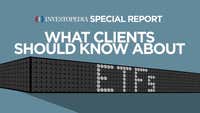What is 'Dollar-Cost Averaging - DCA'
Dollar-cost averaging (DCA) is an investment technique of buying a fixed dollar amount of a particular investment on a regular schedule, regardless of the share price. More shares are purchased when prices are low, and fewer shares are bought when prices are high. It is also referred to as a constant dollar plan.
BREAKING DOWN 'Dollar-Cost Averaging - DCA'
Eventually, the average cost per share of the security becomes smaller and smaller. Dollar-cost averaging lessens the risk of investing a large amount in a single investment at the wrong time. Since no one can predict the direction of the market, DCA is a strategy to eliminate any anxieties that arise from trying to time an investment decision, and it builds the discipline of investing regularly.Dollar-Cost Averaging Example
With DCA, an investor invests the same amount into the same fund over a consistent time period. For example, assume an investor invests $1,000 on the first of each month into Mutual Fund XYZ. Assume that over a period of five months, the share price of Mutual Fund XYZ on the beginning of each month was as follows:
Month 1: $20
Month 2: $16
Month 3: $12
Month 4: $17
Month 5: $23
On the first of each month, by investing $1,000, the investor is able to buy a number of shares equal to $1,000 divided by the share price. In this example, the number of shares purchased each month is equal to:
Month 1 Shares = $1,000 / $20 = 50
Month 2 Shares = $1,000 / $16 = 62.5
Month 3 Shares = $1,000 / $12 = 83.33
Month 4 Shares = $1,000 / $17 = 58.82
Month 5 Shares = $1,000 / $23 = 43.48
Depending on the price, more shares were purchased during some months, and less shares were purchased during other months. Regardless, the total number of shares the investor owns is 298.14, and the average price paid for each of those shares is $16.77. Considering the current price of the shares is $23, this means an original investment of $5,000 has turned into $6,857.11.
If the investor had invested all $5,000 on one of these days instead of spreading the investment across five months, the total profitability of the position would be higher or lower than $6,857.11 depending on the month chosen for the investment. But as noted, no one can time the market, and DCA is a safe strategy to ensure an overall favorable average price per share.
-
Average Up
The process of buying additional shares at higher prices. This ... -
Systematic Investment Plan - SIP
This is a plan where investors make regular, equal payments into ... -
Share Capital
Funds raised by issuing shares in return for cash or other considerations. ... -
Share Turnover
A measure of stock liquidity calculated by dividing the total ... -
Purchase Price
The price that an investor pays for a security. This price is ... -
Specific-Shares Method
A personal financial accounting method that, when used properly, ...
-
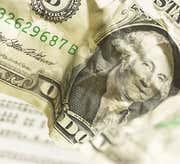 Retirement
RetirementDollar-Cost Averaging Pays
Get the most out of your mutual fund by using this simple but powerful strategy. -
 Personal Finance
Personal FinanceTake Advantage Of Dollar-Cost Averaging
We explain how dollar-cost averaging offers protection and opportunity in a sinking market. -
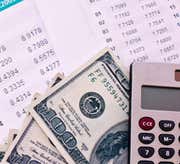 Managing Wealth
Managing WealthChoosing Between Dollar-Cost And Value Averaging
These are two investing practices that seek to counter our natural inclination toward market timing by canceling out some of the risk. -
 Managing Wealth
Managing WealthInvesting $100 a Month in Stocks for 20 Years
Learn how a monthly investment of just $100 can help build a future nest egg using properly diversified stocks or stock mutual funds. -
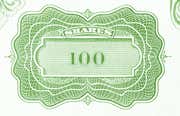 Investing
InvestingThe Basics Of Outstanding Shares And The Float
We go over different types of shares and what investors need to know about them. -
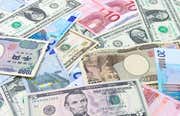 Trading
TradingPros & Cons Of Dollar Cost Averaging
The dollar-cost averaging approach helps investors avoid market timing but they give up some potential for higher returns. -
 Trading
TradingDon't Let Stock Prices Fool You
Find out why a stock with a six-figure share price can still be a good value. -
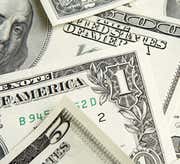 ETFs & Mutual Funds
ETFs & Mutual FundsDollar-Cost Averaging With ETFs
If you are investing small amounts regularly into an exchange-traded fund, be sure to do it right. -
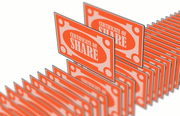 Markets
MarketsThe Weighted Average Of Outstanding Shares
The quantity of a company’s outstanding shares changes when it issues new shares, repurchases or retires existing ones, or converts others. -
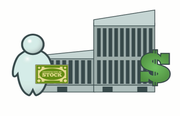 Investing
InvestingWhat are Issued Shares?
Issued shares are the amount of authorized stocks a company’s shareholders buy and own. The annual report shows the number of outstanding shares.
-
How are the shares of a index fund created?
When a firm creates an index fund and the shares have been allocated, are the number of shares fixed? Can the company continually ... Read Answer >> -
What are the benefits and costs (or risks) of a systematic investment plan (SIP)?
Discover the advantages and disadvantages of using a systematic investment plan; you may lower your average cost, or you ... Read Answer >> -
What's the smallest number of shares I can buy?
Unlike mutual funds, which can be purchased in fractional units, shares of stock cannot be divided. So, the smallest number ... Read Answer >> -
What are the main differences between a systematic investment plan (SIP) and mutual ...
Reduce your average cost per share on mutual fund investments using the dollar-cost averaging strategy by way of a systematic ... Read Answer >> -
What is the weighted average of outstanding shares? How is it calculated?
The amount of shares outstanding in a company will often change due to a company issuing new shares, repurchasing and retiring ... Read Answer >> -
Why would I need to know how many outstanding shares the shareholders have?
Find out why shareholders should know how many outstanding shares have been issued by a corporation, and learn what happens ... Read Answer >>



